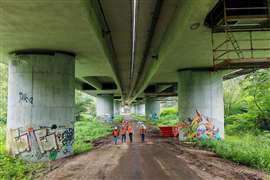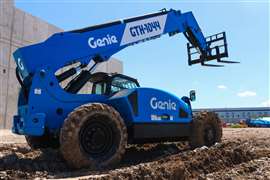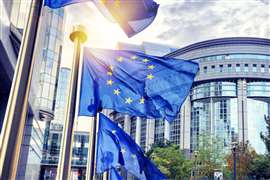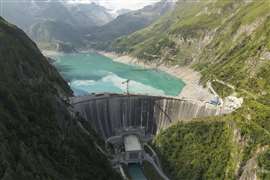Read this article in Français Deutsch Italiano Português Español
‘Don’t wait for the worst’: Call for rethink on European transport infrastructure
01 August 2025
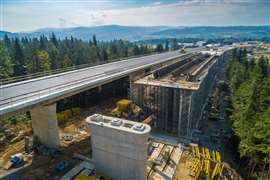 A viaduct under construction on National Road No 7 in Poland (Image: Daniel Jędzura via AdobeStock - stock.adobe.com)
A viaduct under construction on National Road No 7 in Poland (Image: Daniel Jędzura via AdobeStock - stock.adobe.com)
Heavy investment in transport infrastructure alone is not enough to move Europe on from dealing with expensive and disruptive repairs to creaking infrastructure.
That’s one of the main messages from a new report by a group of consulting engineers looking at how construction can help improve resilience in Europe’s transport system.
Produced by the European Federation of Engineering Consultancy Associations (EFCA), in partnership with researchers from the University of Marburg, the report warns there is “uneven” development of transportation networks across Europe, with modern networks generally found in northern and western Europe, while eastern and southern regions suffer from outdated or incomplete infrastructure.
While investments in infrastructure have been significant, an interconnected European transport network is still “far from reality”, while capacity growth has stalled. In rail, for example, capacity growth has risen just 0.1% since 2014, it noted.
Among the network’s core vulnerabilities are ageing infrastructure, with many roads and bridges exceeding their intended lifespan at the same time as dealing with increased traffic loads, bureaucratic delays to new projects, fragmentation across borders, and funding shortfalls for maintenance.
In the most extreme instances, bridges like the Carola Bridge in Dresden, Germany and the Morandi Bridge in Genoa, Italy, have collapsed in 2024 and 2018 respectively.
Meanwhile, transport infrastructure is also vulnerable to external shocks like geopolitical instability, cyber security threats, and climate change impact.
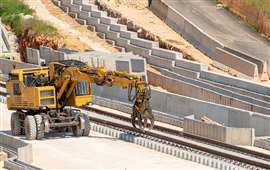 Improvement work on a railway line (Image: peuceta via AdobeStock - stock.adobe.com)
Improvement work on a railway line (Image: peuceta via AdobeStock - stock.adobe.com)
Recommendations
EFCA made a total of seven recommendations for both consulting engineers and policy makers to improve the resilience of Europe’s transport network. They are:
- Set up transport infrastructure stress tests for geopolitical threats;
- Prioritise projects’ actions and enhance cybersecurity systems;
- Modernise infrastructure using climate-resilient materials, smart technologies like digital twins and sensor-integrated systems, dual-use constructions, and expand the e-charging system;
- Streamline planning and permitting processes to reduce administrative delays and accelerate project delivery;
- Prioritise cross-border integration, particularly in rail and logistics corridors;
- Invest in preventative maintenance and adapt current infrastructure for extreme weather and cyber-resilience;
- Promote cross-sector co-operation and knowledge exchange between engineers, policymakers, and digital experts to foster innovation.
EFCA president Inés Ferguson said, “Europe is investing heavily in transport infrastructure but we continue to deliver short-term and fragmented fixes.
“Investing in an integrated, efficient and safe transport network is the way to reinforce the EU single market and make us more competitive. A reliable integration of our transport infrastructure and systems is critical for Europe’s strategic autonomy.”
Jeffrey Seeck, chairman of EFCA’s Future Trends Committee suggested that in addition to investment, there needed to be a shift towards long-term planning, resilient design, and regional coordination.
“If you think bridge collapses and cyber-attacks are just bad luck, you’re on the wrong path. This report is the wake-up call our transport systems desperately need,” Seeck said.
EFCA claimed that consulting engineers are “among the few stakeholders” capable of providing solutions to the challenge of transport infrastructure resilience.
“The European Commission has recently published several key proposals, such as the dual civil and military use of infrastructure, a continent-wide High-Speed Rail Network and, most recently, the proposal for the next Multiannual Financial Framework. While welcoming these measures, EFCA urges European and national policy makers to avoid half-measures and implement a truly comprehensive vision and policy for the transport sector,” EFCA said.
Projects for greater resilience
The report highlighted three recent projects within Europe to increase the resilience of transport projects. They include:
1) “Klimaphalt”: A project by German road construction entrepreneur Lutz Weiler to create a climate-resilient road surface that mimics natural processes. Its light-coloured, permeable top layer reflects more sunlight, while it has a permeable, bituminous base layer made from partly crushed bricks, and a microplastic filter beneath that to prevent pollution. According to EFCA, the surface reflects 20% more solar radiation and absorbs road noise through an open-pored surface. It can also retain up to 100 litres of rainwater per square metre, to help manage heavy rainfall. The results of a field test in Offenbach am Main, Germany, are still pending.
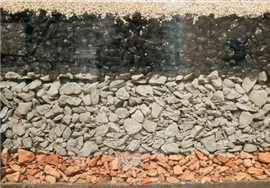 Klimaphalt has been developed by Klimabond (Image: Klimabond)
Klimaphalt has been developed by Klimabond (Image: Klimabond)
2) Geothermal road system: Germany’s University of Kassel is testing geothermal road systems to regulate asphalt temperatures. The concept uses embedded water pipes in the road surface to absorb heat in summer, stored by a heat exchanger, and reuse it in winter to prevent ice formation.
3) MetroCHARGE: Barcelona’s MetroCHARGE system combines regenerative braking systems in the city’s Metro system with rooftop solar panels across 16 stations. The system supplies power to the metro network and to 33 EV charging stations citywide, using direct cable-based energy transfer that bypasses the grid.
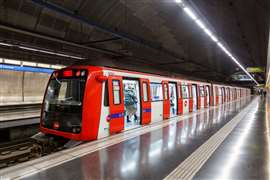 El Carmel station on the Barcelona Metro (Image: Markus Mainka via AdobeStock - stock.adobe.com)
El Carmel station on the Barcelona Metro (Image: Markus Mainka via AdobeStock - stock.adobe.com)
STAY CONNECTED


Receive the information you need when you need it through our world-leading magazines, newsletters and daily briefings.
CONNECT WITH THE TEAM









